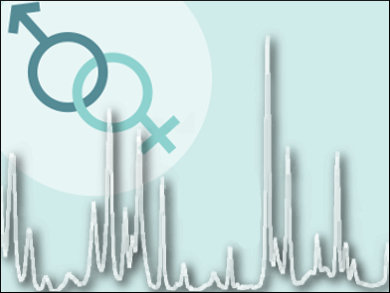Forensic science has been revolutionized by DNA analysis. However, sometimes there is no DNA match for a trace found at a crime scene. It would be helpful if such traces could still give investigators some clues about physical characteristics of a subject, e.g., sex, hair color, or age. In some cases, this can be achieved by DNA analysis. However, this destroys the sample.
Igor K. Lednev and colleagues, University at Albany, NY, USA, have developed a non-destructive technique that can determine the sex of donors of saliva traces. The team used a combination of Raman spectroscopy and multivariate data analysis, a statistical method of analyzing several variables at the same time. Raman spectra of saliva mostly show the proteins and amino acids in the sample. The differences between average spectra of male and female samples are very small. Thus, the team analyzed several spectra from each donor and used a statistical model to evaluate the likelihood of each single spectrum belonging to a male or female donor. If 67 % of a donor’s spectra were classified as a certain sex, so was the donor.
The team used samples of 48 saliva donors to calibrate the technique, and 12 other donors to validate the approach. The resulting model correctly identified the sex of 94 % of the donors in the calibration set and of 92 % of those in the validation group. According to the researchers, this proof-of-concept is promising for forensic applications and could be further developed to allow fast on-site analysis.
- Sex Determination Based on Raman Spectroscopy of Saliva Traces for Forensic Purposes,
Claire K. Muro, Luciana de Souza Fernandes, Igor K. Lednev,
Anal. Chem. 2016.
DOI: 10.1021/acs.analchem.6b03988




